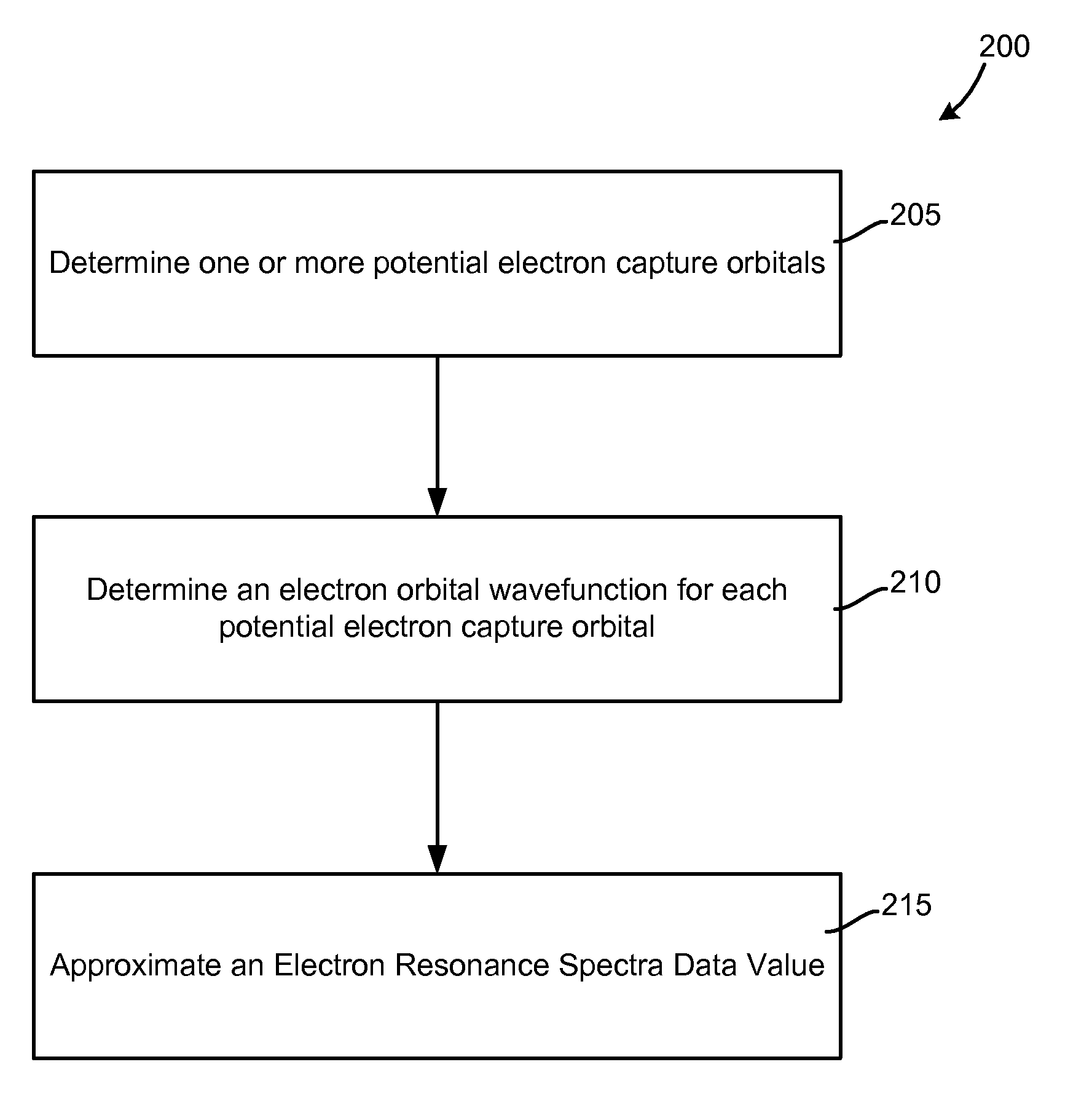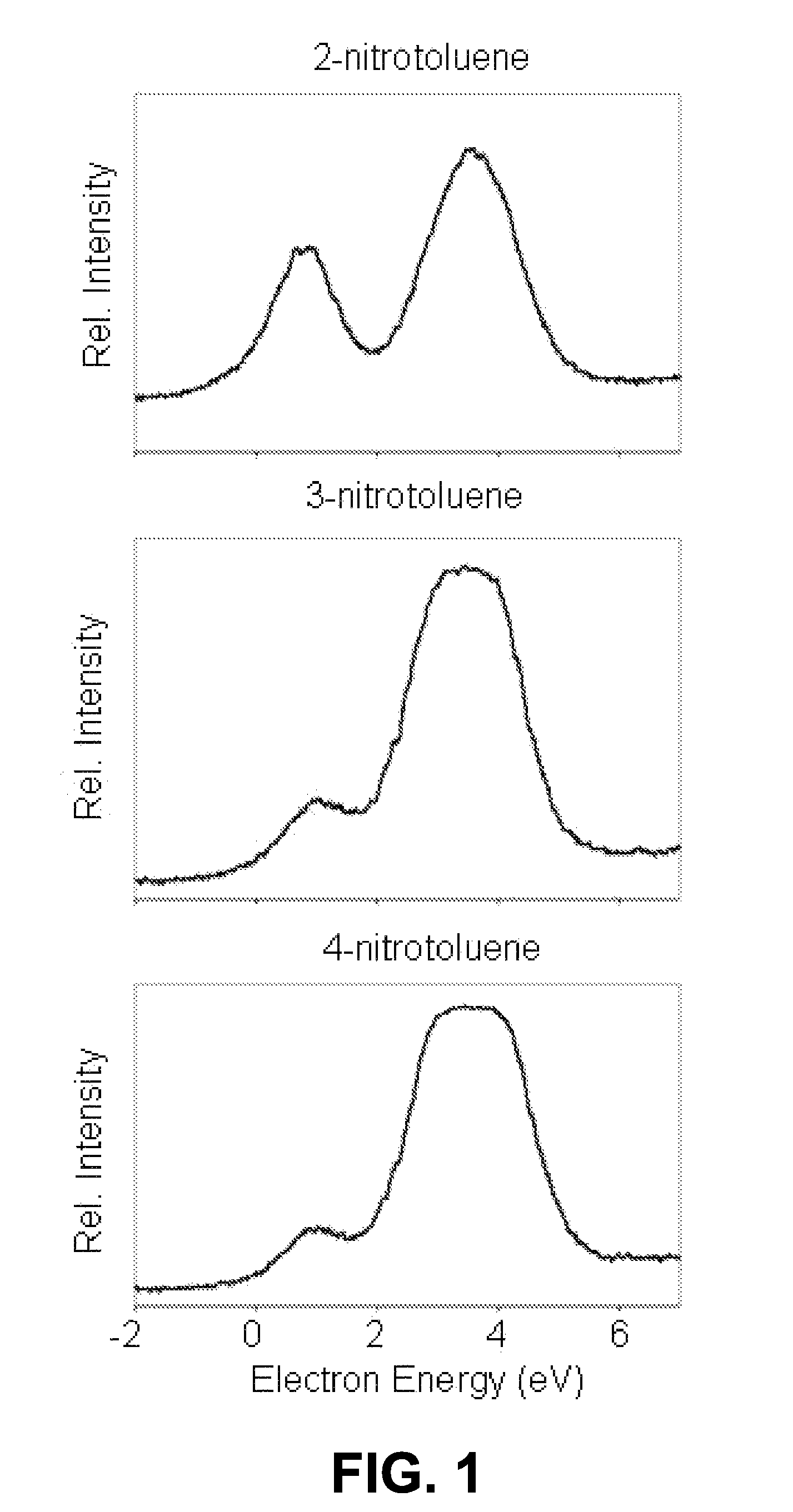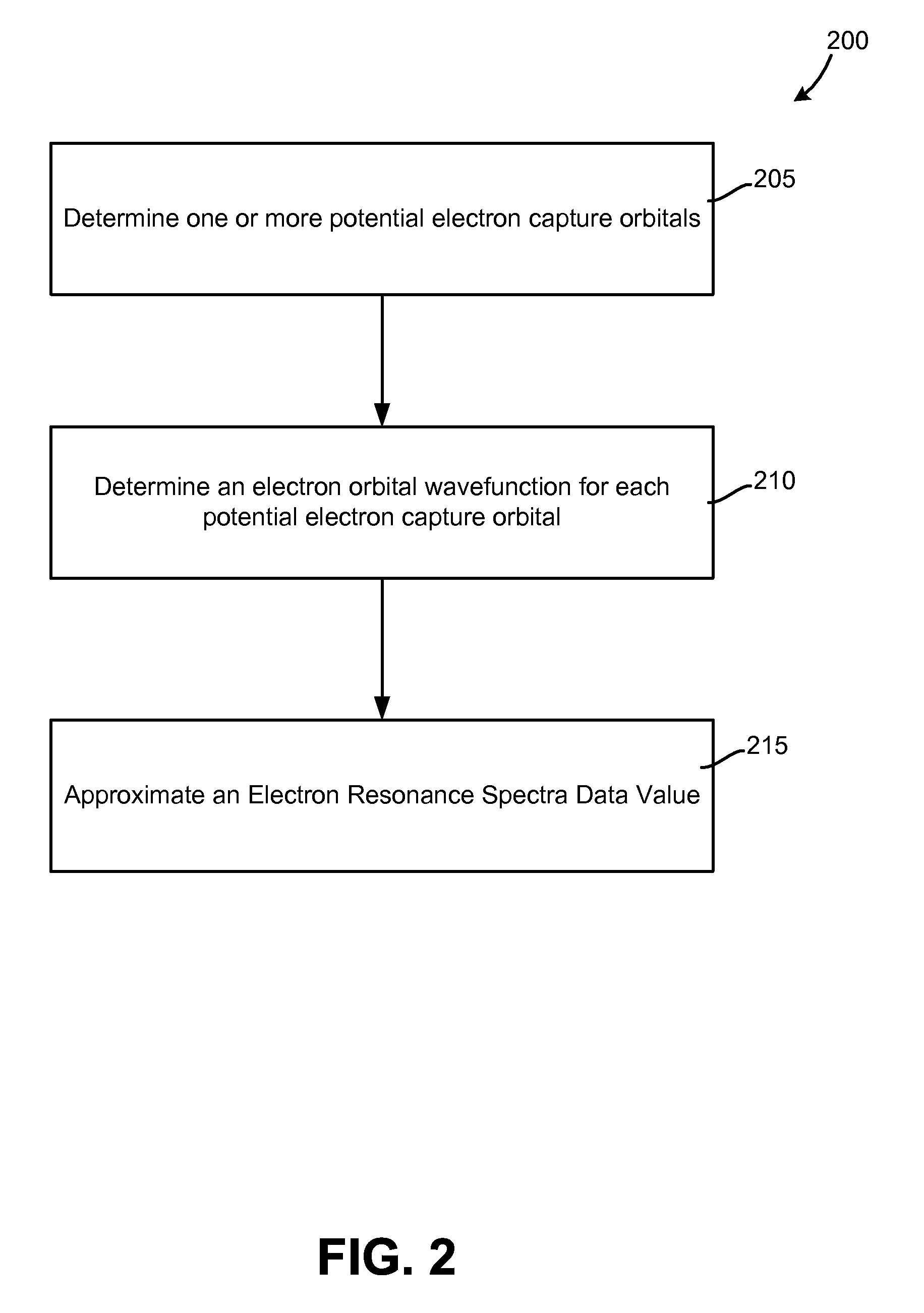Molecular identification and electron resonance system and method
a technology of electron resonance and molecular identification, applied in the field of molecular identification, can solve the problems of difficult library construction and large number of such standards
- Summary
- Abstract
- Description
- Claims
- Application Information
AI Technical Summary
Benefits of technology
Problems solved by technology
Method used
Image
Examples
Embodiment Construction
[0030]In dissociative electron capture, as well as other ionization analytical techniques, fragmentation of a chemical constituent (e.g., an unknown analyte) may be useful for identifying and / or determining one or more characteristics of the chemical constituent. For example, in EM-MS an electron of a specific energy may be captured by a molecule of a chemical constituent to produce an ion of a characteristic mass that may be detected as a fragment ion. Equation (1) below illustrates one example of such an electron capture:
e−+AB→A·+B− (1)
where AB is an isomer of a chemical constituent, B is a negatively charged fragment, and A· is a radical. In one embodiment, a theoretical electron resonance spectra data may be calculated for a chemical constituent subjected to electron capture, such as that in equation (1). Electron resonance spectra data includes spectrographic data predicted to exist for a given chemical constituent. The term theoretical is used herein to distinguish between da...
PUM
 Login to View More
Login to View More Abstract
Description
Claims
Application Information
 Login to View More
Login to View More - R&D
- Intellectual Property
- Life Sciences
- Materials
- Tech Scout
- Unparalleled Data Quality
- Higher Quality Content
- 60% Fewer Hallucinations
Browse by: Latest US Patents, China's latest patents, Technical Efficacy Thesaurus, Application Domain, Technology Topic, Popular Technical Reports.
© 2025 PatSnap. All rights reserved.Legal|Privacy policy|Modern Slavery Act Transparency Statement|Sitemap|About US| Contact US: help@patsnap.com



